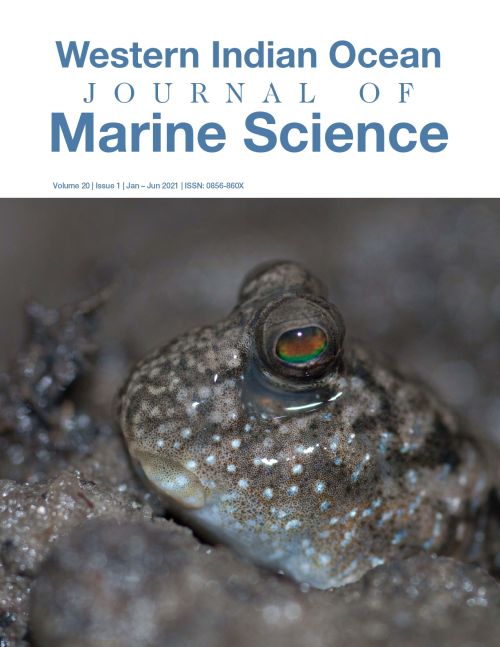Main Article Content
Impact of a ring net fishery in the inshore marine waters of Kilifi on the reproductive biology of six pelagic fish species
Abstract
Ring nets are modified purse seines used for pelagic fishing along the Kenya coast. This method is however associated with potential negative environmental implications in inshore and shallow fishing grounds. Biological impacts on selected pelagic species caught in the marine waters of Kilifi were investigated during the Southeast Monsoon season (SEM) in April, May and September 2014, and the Northeast Monsoon season (NEM) in October and November 2014, and March 2015. Amblygaster sirm, Rastrelliger brachysoma, Sardinella gibbosa, Rastrelliger kanagurta, Hemiramphus far and Sphyraena obtusata were the most abundant species caught by the ring nets and comprised 68.9 % of fish catch composition. Analysis of ring net impacts on the fish sizes and maturity status were conducted for the NEM and SEM seasons. The catch composition for A. sirm in October comprised of 53.3 % juveniles and 53.4 % juveniles for S. obtusata in November. High percentages of H. far (78.3%) and S. obtusata (58.9 %) were captured in September. Incidences of undersize fish for A. sirm, S. gibbosa, R. kanagurta and R. brachysoma were observed across the seasons. Sex ratios for A. sirm, R. brachysoma, R. kanagurta and S. obtusata in the NEM season deviated from a normal ratio of 1:1 with more males observed. Females were dominant in the catch for H. far (1: 1.28) but the ratio was not different for S. gibbosa (χ² = 5.564, df = 1, p = 0.21). Males were dominant for A. sirm (1: 0.8) and S. gibbosa (1: 0.7) in the SEM season but the ratios were not different for H. far, S. obtusata, R. brachysoma and R. kanagurta. Differences in sex ratios were attributed to fish migrations and reproductive processes. Ring nets fished relatively offshore during the NEM season and targeted mainly spawning aggregations in stage IV. Immature fish in stage I and II which comprised of juveniles were harvested within sheltered inshore waters in the SEM season. Use of ring nets to target juveniles and spawning aggregations may disrupt recruitment processes. To enhance sustainable management of the ring net fishery, there is a need to develop harvesting strategies based on the information on stock status of the target fish.






